Buyer understanding of common insurance coverage merchandise could also be decrease than many corporations realise – and decrease nonetheless on account of the proliferation of tiered merchandise which generally strip out cowl and lift excesses.
In a Viewsbank survey of 1056 folks carried out in February, Client Intelligence discovered that information about cowl ranges and extra charges diverse extensively.
Greater than 1 in 5 of these with insurance coverage had no concept what degree of motor (22%) or residence (21%) cowl they’d bought – high, normal, or fundamental.
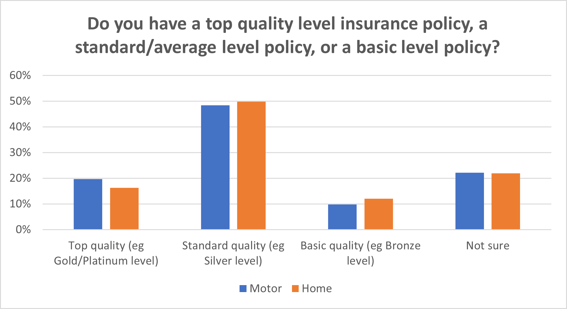
When requested in additional element concerning the degree of canopy they’d, as many as 46% of automotive insurance coverage clients had no concept how a lot extra they’d agreed to pay within the occasion of a declare, rising to just about 60% of residence clients.
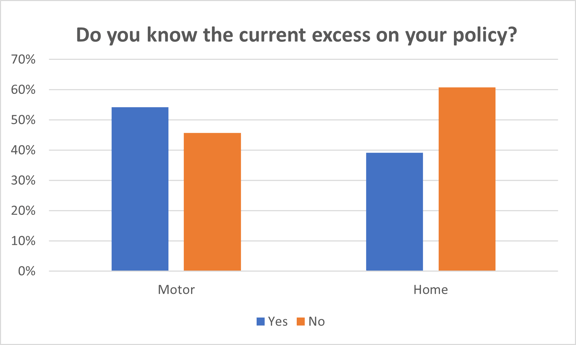
Maybe extra worryingly given the prices concerned, 15% of residence insurance coverage customers had no concept their residence insurance coverage extra may very well be increased for issues like burst pipes or subsidence, with 37% admitting they’d no concept what they is perhaps liable to pay.
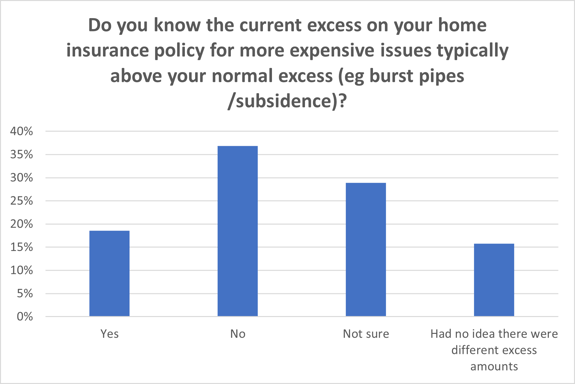
Client Intelligence’s Head of Client Technique Catherine Carey explains: “We’ve seen an explosion of product tiers following the Basic Insurance coverage Pricing Practices (GIPP) reforms, with manufacturers bringing out bronze/silver/gold variations to serve totally different shopper budgets – and to get a bonus on the Worth Comparability Web sites.
“To be truthful, it’s a method the FCA has largely accredited of, significantly because it gives susceptible clients – as an illustration these scuffling with payments throughout the cost-of-living disaster – with reasonably priced cowl choices. However make no mistake, shopper understanding is a key pillar of the forthcoming Client Responsibility – and it appears to be like like corporations would possibly have to spend extra time making certain their clients actually perceive what they’re getting – and never getting – after they go for a graded product.”
And many individuals ARE occupied with downgrading at their subsequent renewal. Our survey discovered that 31% of motor customers would take into account going for a less expensive model of their coverage with much less cowl, with 29% nonetheless on the fence. 26% of residence insurance coverage customers would take into account a downgrade – with 25% nonetheless uncertain.
What grew to become actually fascinating was what folks thought they may select to sacrifice from a coverage to be able to pay much less for it.
Key cowl was a characteristic 4-in-10 drivers mentioned they may do with out, adopted by a courtesy automotive and breakdown cowl. 29% would sacrifice authorized bills, and 26% mentioned they’d be ready to let go of their decrease extra cost. Which when so many indicated they didn’t know what their present extra really was, appears to point an essential understanding hole.
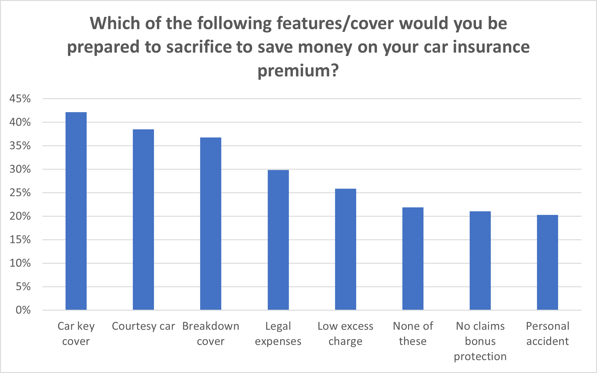
In the meantime, barely fewer householders mentioned they’d go for sacrificing their low or decrease extra payment (17%), with the preferred factor to lose being jewelry cowl, adopted by fridge/freezer contents, after which private belongings away from the house. 1 in 4 would sacrifice machine cowl.
With that together with costly objects like telephones and laptops, it’s once more unclear whether or not individuals are really considering by and understanding the implications of much less complete cowl.
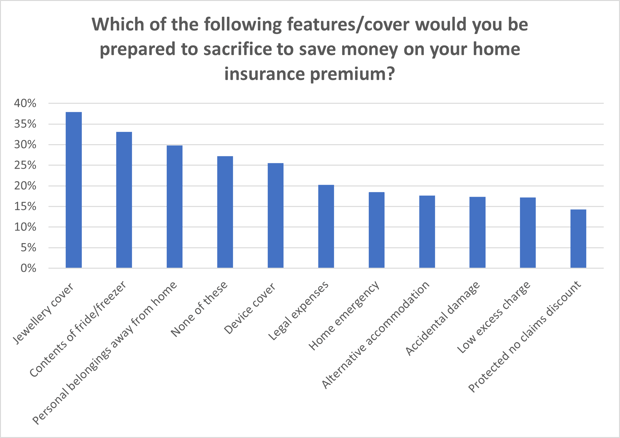
Catherine Carey added: “The true crux of the issue is that many lower-tiered merchandise are so priced as a result of they strip out precisely the types of parts or extras we requested folks in the event that they’d be tempted to go with out. Additionally they sometimes elevate excesses besides – presumably to a degree that many shoppers inquisitive about price range choices merely wouldn’t have the ability to afford.”
After we requested folks about whether or not they had cash put aside in financial savings for home emergencies, we discovered that 30% admitted they didn’t. Digging down, we requested how a lot they may have the ability to afford to pay out in an emergency in a typical month. Whereas 35% may discover £500+, 10% may pay nothing. One other 10% had lower than £50 to spare.
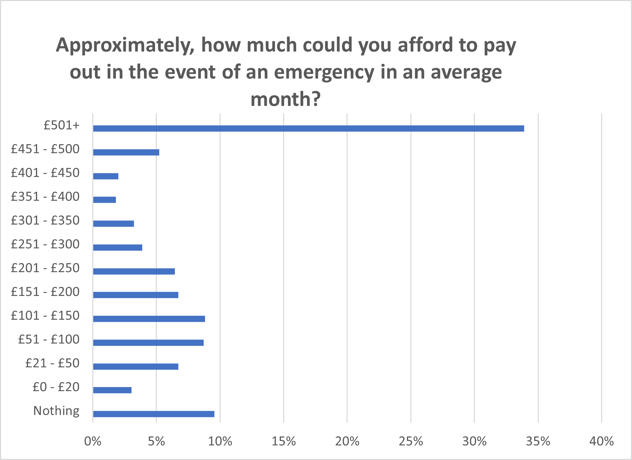
With automotive extra on some lower-tiered insurance policies mechanically set at £250+ – there’s a clear and regarding hole. And people going through the surplus charges for one thing like escape of water would discover themselves in much more issue.
They’re findings which are mirrored within the FCA’s newest Financial Lives Survey, which discovered that 1-in-4 Brits are in monetary issue – or may shortly discover themselves in issue in the event that they suffered even a modest monetary shock – with round 32 million already discovering it a burden to maintain up with payments.
Catherine Carey continued: “For those who can’t afford to switch your telephone, pay somebody to choose you up from the aspect of the motorway, get a rent automotive to do the varsity/work run whereas yours is being fastened, name somebody out to repair your boiler, or pay the surplus to repair your leak – then your price range coverage instantly isn’t very ‘reasonably priced’ is it? The FCA needs to ensure folks perceive that commerce off earlier than they purchase.
“Our job as an trade is to offer folks with a security internet. If we’re concentrating on price range merchandise at individuals who in actuality gained’t have the ability to use them within the occasion of a declare, we’re open ourselves as much as poor shopper outcomes.
“Sure, the FCA wants us to cater for susceptible clients – however they’ve been very clear that that’s THROUGH a lens of Client Responsibility. It’s time to consider whether or not your price range traces are actually providing truthful worth, and whether or not they’re actually serving to those that actually need assistance – exactly after they want it most.”
Perceive the wants and motivations of your clients or audience.
Our Viewsbank panel helps our clients with all kinds of initiatives starting from detailed thriller buying to demographically focused analysis surveys. The analysis helps our purchasers make knowledgeable choices based mostly on true understanding of the buyer’s voice.
